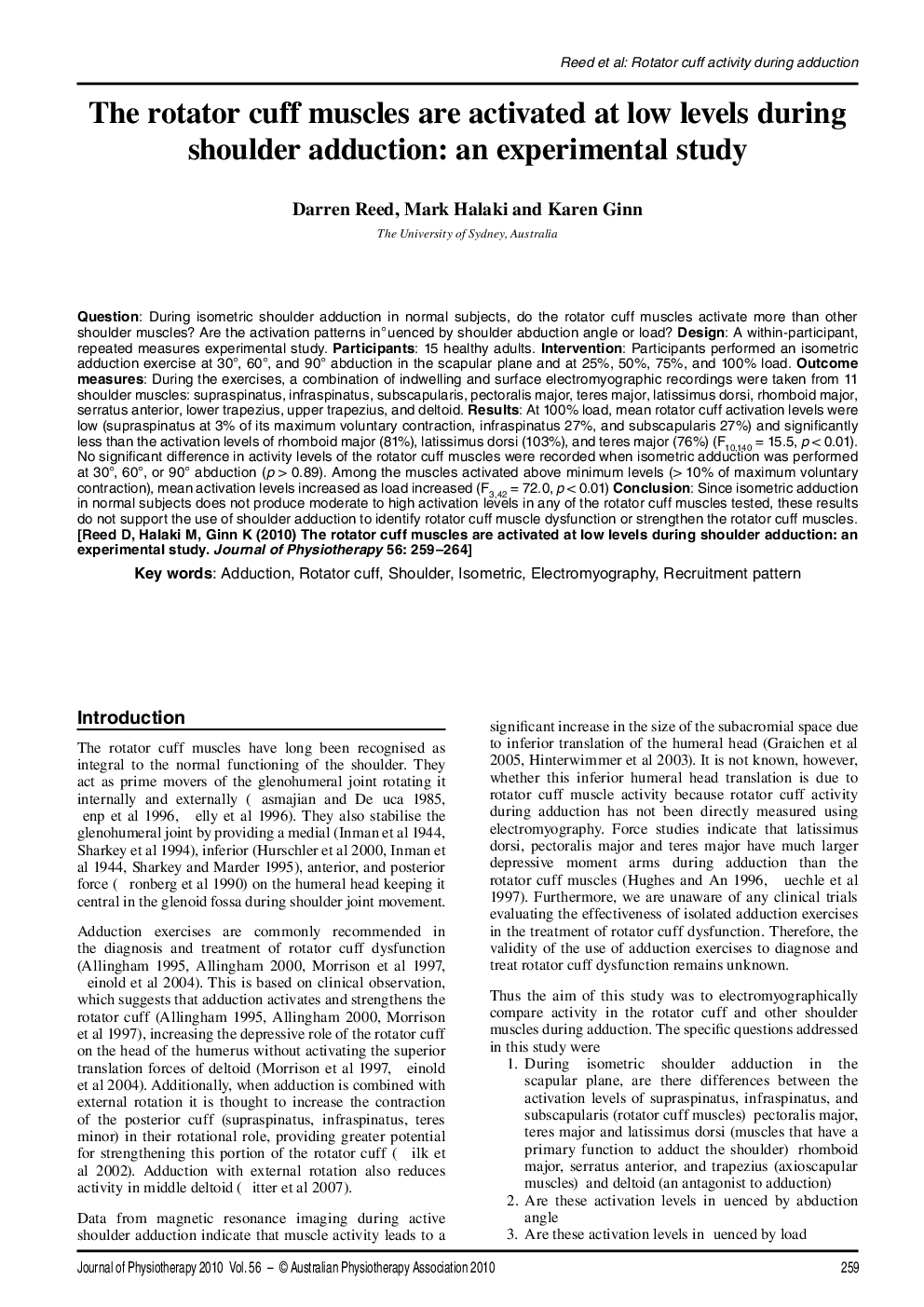| Article ID | Journal | Published Year | Pages | File Type |
|---|---|---|---|---|
| 2621942 | Journal of Physiotherapy | 2010 | 6 Pages |
QuestionDuring isometric shoulder adduction in normal subjects, do the rotator cuff muscles activate more than other shoulder muscles? Are the activation patterns influenced by shoulder abduction angle or load?DesignA within-participant, repeated measures experimental study.Participants15 healthy adults.InterventionParticipants performed an isometric adduction exercise at 30°, 60°, and 90° abduction in the scapular plane and at 25%, 50%, 75%, and 100% load.Outcome measuresDuring the exercises, a combination of indwelling and surface electromyographic recordings were taken from 11 shoulder muscles: supraspinatus, infraspinatus, subscapularis, pectoralis major, teres major, latissimus dorsi, rhomboid major, serratus anterior, lower trapezius, upper trapezius, and deltoid.ResultsAt 100% load, mean rotator cuff activation levels were low (supraspinatus at 3% of its maximum voluntary contraction, infraspinatus 27%, and subscapularis 27%) and significantly less than the activation levels of rhomboid major (81%), latissimus dorsi (103%), and teres major (76%) (F10,140 = 15.5, p < 0.01). No significant difference in activity levels of the rotator cuff muscles were recorded when isometric adduction was performed at 30°, 60°, or 90° abduction (p > 0.89). Among the muscles activated above minimum levels (> 10% of maximum voluntary contraction), mean activation levels increased as load increased (F3,42 = 72.0, p < 0.01)ConclusionSince isometric adduction in normal subjects does not produce moderate to high activation levels in any of the rotator cuff muscles tested, these results do not support the use of shoulder adduction to identify rotator cuff muscle dysfunction or strengthen the rotator cuff muscles.
